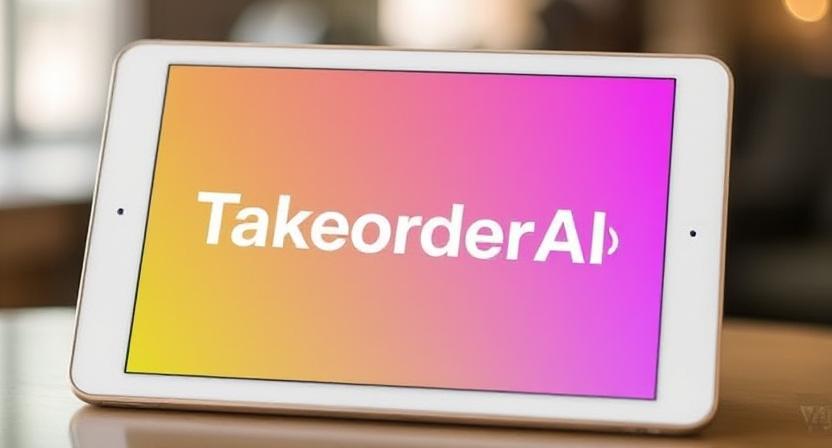
Can AI Sound Human Enough? What Guests Think About Takeorder AI
Introduction
In an era where automation is reshaping the restaurant industry, the question isn't whether voice AI can take phone orders, but whether it can do so convincingly enough that guests don’t notice (or mind) it’s not human. When diners call in with questions, custom orders, or reservations, they expect friendly and attentive service. That’s where the challenge and the opportunity lie for Takeorder AI.
This blog explores the heart of that challenge: Can AI really sound human enough to handle restaurant phone calls? And more importantly, how do actual customers respond when they realize they’re speaking to a voice assistant instead of a person?
Why “Sounding Human” Matters in Restaurant Service
Restaurants are built on hospitality. Whether a customer is dining in, ordering takeout, or making a reservation, their interaction, especially over the phone, is a reflection of your brand. If the person (or system) on the other end sounds mechanical, cold, or inaccurate, it damages trust instantly.
Phone interactions play a unique role. Unlike digital menus or online chat, phone calls are inherently personal. Customers want to feel heard, understood, and respected. A monotone, robotic experience won’t just frustrate them, it could cost you a loyal guest.
That’s why sounding human isn’t just a technical achievement for AI. It’s a business necessity.
How Takeorder AI Sounds Human by Design
Takeorder AI was purpose-built to handle restaurant calls with conversational fluency. Behind the scenes, it uses advanced natural language processing and speech generation to create a human-like experience.
Here’s how it works:
These features don’t just improve efficiency, they help preserve the personal touch restaurants are known for.
What Guests Think About Takeorder AI
Technology in hospitality often succeeds or fails based on guest perception. So, what do real customers think about speaking to Takeorder AI?
Here are some of the most common reactions and feedback from users and restaurant partners who’ve implemented the system.
“I Had No Idea It Was AI”
This is perhaps the most telling piece of feedback. Many callers complete their orders or reservations without ever realizing they aren’t speaking to a human. That’s a sign the voice AI has passed the “Turing Test” of restaurant service, at least in practical terms.
“It Was Easier Than Talking to Staff During Rush Hours”
During peak times, even the most experienced restaurant staff can get overwhelmed. Guests notice when a call is rushed or when they’re put on hold repeatedly. Several diners reported that Takeorder AI provided a smoother experience, with no hold music, no background noise, and no interruptions.
“I Like That It Repeats My Order Clearly”
One of the advantages of AI is its consistency. Every order is repeated for confirmation, every name is spelled back, and every phone number is read aloud. This builds confidence in the accuracy of the process, something that can sometimes falter with human error.
“It Was Clear, Polite, and Sounded Real.”
The tone, speed, and phrasing all contribute to a sense of politeness and professionalism. Guests appreciate not feeling rushed, misunderstood, or ignored, something they’ve occasionally experienced with busy staff.
Survey Insights (Illustrative Data)
These insights indicate a growing acceptance, and even preference, for AI-powered phone ordering when executed properly.
Real-World Scenarios Where AI Outperforms Expectations
Restaurants are fast-paced environments with varying challenges. Takeorder AI is designed to meet these with consistency and adaptability.
During Peak Hours
When your restaurant is fully booked or flooded with orders, Takeorder AI doesn’t get tired, flustered, or make mistakes. It can take multiple calls simultaneously without affecting the quality of service.
Handling Complex Orders
Customization is common in today’s food culture. Guests often request substitutions, allergy-friendly options, or special instructions. Takeorder AI handles these requests with precision, repeating them back and confirming every detail.
Serving Multilingual Guests
In areas with diverse populations or tourist traffic, being able to offer seamless service in multiple languages is a competitive edge. Takeorder AI is multilingual-ready, reducing friction for non-native English speakers.
Late-Night or Early-Morning Calls
AI doesn’t clock out. Restaurants that operate outside standard hours can still offer full phone support without requiring extra staffing. This is especially useful for 24/7 delivery operations or early-morning bakeries and cafes.
Guests with Hearing or Speech Challenges
Clear enunciation, adjustable volume, and consistent pacing make Takeorder AI easier to understand for some guests who struggle with fast or mumbled speech.
Why Human-AI Blending Works Best
While Takeorder AI can handle nearly all call-based interactions, it’s also designed with a human backup flow. If the AI encounters an uncommon request or senses customer frustration, it can seamlessly transfer the call to a live agent.
This hybrid model combines the speed and efficiency of automation with the warmth and flexibility of human support. It’s a win-win for both restaurants and their guests.
The Future of Voice in Restaurants
As restaurant technology evolves, Voice AI is becoming more than just a support tool; it’s a critical part of the customer experience. The key to success is making that technology invisible to the guest, or better yet, indistinguishable from a skilled staff member.
With Takeorder AI, that vision is already a reality. By blending high-level natural language processing, emotional tone modeling, and seamless POS integration, Takeorder AI doesn’t just take orders; it elevates them.
Conclusion: The Voice Guests Can Trust
The voice your guests hear when they call your restaurant sets the tone for their entire experience. With Takeorder AI, that voice is always calm, clear, and ready, no matter how busy your kitchen is.
In a world where speed and accuracy are critical, Takeorder AI delivers both without sacrificing the personal feel that keeps customers coming back. And as guest feedback continues to affirm, most callers aren’t asking whether it’s human. They’re just glad it works and works well.
Stay updated on our news and events! Sign up to receive our newsletter.
Thank you for signing up!
Something went wrong. Please try again later.